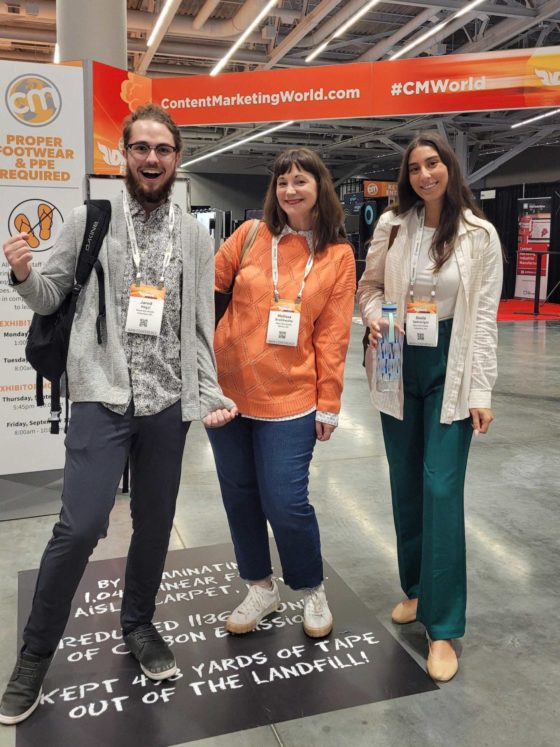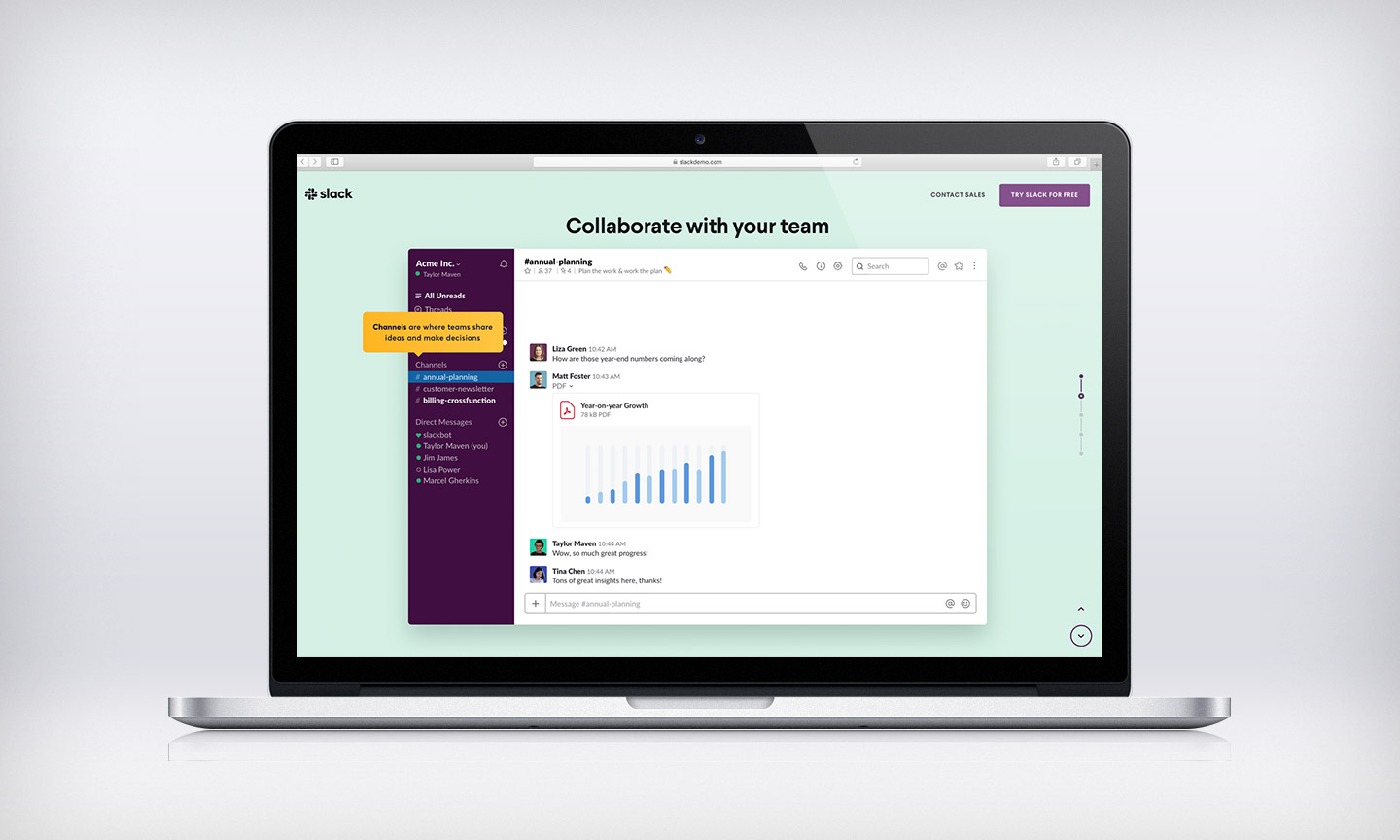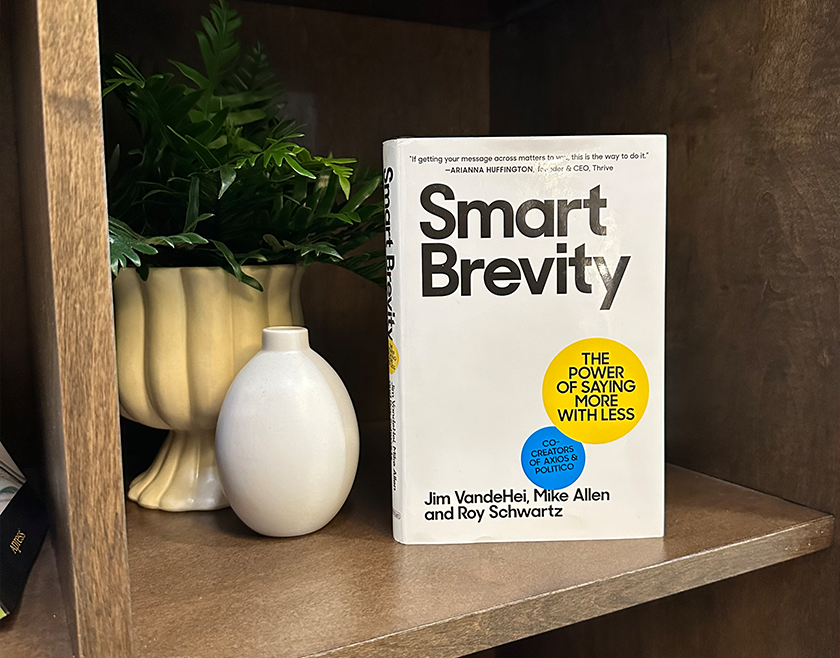Ah, the life of a salesperson – endless pitches, countless presentations, and a never-ending quest to hit those quotas. It’s no wonder they spend so much time honing their skills in the art of persuasion. But what about the lesser-known talent of completely missing the point when a customer is ready to make a purchase? Fear not, dear readers, for we have compiled a comprehensive guide to ensure that salespeople everywhere can continue to sabotage their own success.
Step 1: Preparation is Overrated
Why take the time to research your client’s needs or learn about their pain points when you can wing it with a generic pitch? Who cares if you’ve been handed a golden opportunity to customize your approach and demonstrate that you genuinely understand their needs? The key here is to focus on what YOU want to say rather than what the customer needs to hear.
Step 2: Monologue for Maximum Miscommunication
Nothing says “I’m not interested in your opinion” like a good old-fashioned monologue. To truly excel in not listening, be sure to talk non-stop and avoid pausing for breath. As your customer’s eyes glaze over, you’ll know you’ve reached the pinnacle of missing the point, and no matter what, don’t ask the customer what they want because that might distract you.

Step 3: Fully Embrace the Art of Interruption
Listening is overrated, and there’s no better way to prove this than by interrupting your customer every time they try to speak. After all, how can they possibly contribute anything valuable to the conversation? You’re the expert, and they should be grateful for your insights..
Step 4: Ignore Those Bothersome Buying Signals
Is your customer nodding along in agreement? Are they asking for pricing or delivery details? Whatever you do, don’t acknowledge these buying signals! Instead, plow ahead with your pre-rehearsed script, oblivious to the fact that you could be closing the deal.
Step 5: Power Through Those Questions & Concerns
When a customer asks a question or raises a concern, it’s a perfect opportunity to demonstrate your lack of interest in their needs. Try to brush off their questions or change the subject to something you’d rather discuss. Who knows, maybe they’ll eventually give up on getting their questions answered and just buy out of sheer frustration.
Summary:
A customer can’t possibly buy until you’ve finished selling. You have an agenda, and you have to get through what you want to say. How could they possibly be qualified to buy when they haven’t heard your presentation, watched your demo reel, or glazed over at your PowerPoint?
Recently three of our team members attended the annual Content Marketing World Conference in Cleveland, Ohio. They came back energized and excited to share takeaways from this year’s conference.

What Is Content Marketing?
More than just specific content for your brand, content marketing is a strategic marketing approach that aims to distribute valuable, relevant, and consistent content to attract and nurture audiences, drive profitable customer action, and ultimately help you meet business goals.
Content marketing, like other industries, is constantly changing as technology develops and consumer preferences shift. As leaders in the field, it’s important for us to stay ahead of critical changes and insights that impact our clients’ content marketing efforts.
Here are some takeaways from Content Marketing World 2022 that any business creating content (and that should be all of you!) can use to develop more effective and engaging content.
Double Down On Empathy
Post-pandemic, many people have a heightened sense of uncertainty, vigilance, and distrust. As marketers, empathy and transparency should be the foundation of all of our work. An honest and unexpected approach gains trust and shares an authentic version of ourselves and our businesses that consumers can connect with.
Strategy Is Significant
Many agencies offer the same services. So what sets them apart? It’s not just the social media or web content they create; it’s the content strategy. Anyone can create content, but a valuable agency partner communicates a consistent stream of meaningful information across all channels. Look for a strategy-first agency to ensure your marketing dollars are used most effectively.
Play The Long Game
Content marketing, done right, takes time. Sure, we can see an immediate impact from campaigns, but for a long-term, sustainable marketing program to be successful, a patient approach is needed. You need time to build an audience that knows, trusts and likes you and to see results that will move the needle.
Audience First
Creating content that your audience connects with is not as simple as it seems. Gain an understanding of your customer rooted in data and insights—not just demographics, but how and why they buy, what they hope for, and even what they fear. Craft content in your sweet spot—the intersection of your expertise and what buyers need and want to know. Test your content with a small audience segment and revise the content strategy as needed based on their response.
Content marketing is just one important piece of the marketing puzzle. If you’re creating content without an integrated marketing strategy, you’re left wondering if your content (and dollars) are making any meaningful impact. Need help connecting the dots and upping your marketing game? We’d love to help. Helping is our favorite. Reach out and let’s chat about how to put our expertise to work for your business.
CONTENT MARKETING IS A LONG GAME THAT REQUIRES EMPATHY TO BUILD TRUST AND AN INTEGRATED STRATEGY.
Shout Out Studio Acquires Good Clover Communications
June 14, 2022, Columbus, OH – Shout Out Studio, a full-service brand marketing agency based in Columbus, Ohio, has announced the acquisition of Good Clover Communications, a marketing and communications agency also based in the Columbus area. The acquisition positions Shout Out Studio for continued growth within the Columbus market and beyond.
“Bringing Good Clover Communications into the Shout Out Studio fold will allow us to offer bolder strategies to help our clients continue to connect to their audiences in meaningful ways,” said Shout Out Studio CEO Marsh Williams.
Melissa Braithwaite, the owner of Good Clover Communications, joined the Shout Out Studio team as Director of Client Marketing in May.
“We are thrilled to welcome Melissa to the Shout Out Studio leadership team,” Williams said. “From the first time we met, there was a foundation for a great relationship. We know she will be an incredible asset to the team, and mostly, to our clients.”
Braithwaite brings nearly 20 years of experience in marketing communications, public relations, and content creation to Shout Out Studio. Her passion lies in creatively approaching marketing problems to engage, connect, and drive business. Two of her associates from Good Clover, Christine Bryant, and Dani Goodman, will join the Shout Out team.
“I am blown away by the amount of talent at Shout Out Studio, and I am humbled and excited to join their ranks. I am thrilled to join this highly creative team as the Director of Client Marketing and look forward to helping to drive the agency forward,” Braithwaite said.
About Shout Out Studio
Based in Columbus, Ohio, Shout Out Studio is a collaborative group of thinkers, creators, learners, doers, and partners to our clients. Though our work connects us with folks across the country, we’re proud to call Columbus, Ohio, our home. We feed off of our city’s creative energy, caring nature, and sense of collaboration.
Collectively, our group has developed brand communications for global, national, and regional brands, executed marketing campaigns for tens of thousands, and increased digital effectiveness for scores of companies, both large and small.
For more information, contact us.
My wife and I leased a new car recently. Pre-COVID. We don’t change cars often, but it was time. We settled on a budget-friendly, Ohio winter-friendly, grown-up, anti-college-car car.
This was the first time at a dealership in a while. For some reason, I guess I expected the approach had changed since so many other consumer interactions have. But nothing seemed that different.
I spent some time in new car sales during college. People who know me know how ridiculous that sounds. Not because there’s anything wrong with car sales. There are absolutely great dealerships out there filled with honest, attentive sales associates. More so, because I’m what you might call a fumbling introvert.
It all got me to thinking about sales today. How it’s not really about selling at all if you’ve grown and evolved along with purchasing habits and consumer expectations.
It’s not hard to find biting stats like these when it comes to sales:
- 7 out of 10 customers believe that the sales reps are product-focused rather than customer-focused
- Only 13% of customers believe a salesperson can understand their needs.
SO IF SALES IS NOT ABOUT SELLING, WHAT IS IT ABOUT?
Externally it’s about:
- Teaching: not the feature-benefits but teaching what to expect in the process and after.
- Clearing the misconceptions: allowing for transparency in who is involved, how the service/product compares, and how there’s a real possibility that it doesn’t fit with the customer’s needs.
- Acknowledgment of reservations: hearing the customer and talking with them not talking around them.
- Anti-segmentation: less lumping into groups, more individualization. What’s that you say? You can’t “scale” like that? Focus your processes on quality over quantity.
- Being a trusted advisor instead of a “consultative salesperson.” Here the conversation starts at a higher level instead of a transaction.
Internally it’s about:
- A seamless connection between marketing, brand management, and the “sales” interaction
- The right mix of Direct and Indirect (inbound, content-driven) Lead Generation
- The beginning of your customer retention efforts. Even before the first sale is complete you are building credit toward return and/or expanded business.
A recent Salesforce Research study shows that “84% of customers say that the experience a company provides is as important as its products or services.”
Sales is not about selling anymore. When organizations consider the sales process part of the experience, everyone wins.
Thoughts or experiences on the subject? Share them with us on social.
It’s a brand new world and for the first time many are finding themselves working in a comfortable, but unfamiliar space; at home. While we have been fortunate enough to experience this before we also realize it is new to many so we’ve put together some of our top tips for being productive while operating in this new era.
Marsh:
To us “Social Distancing” means be physically apart but socially connected…our primary ally in that approach is Slack.
Staying in touch is one of the biggest issues for teams, learning to work apart but still needing to feel connected by purpose and personal exchange. We use Slack as our mainstay to address this. Many people are aware of Slack and live by it, yet many are not.
In its simplest form, we use Slack to facilitate day-to-day communication around the needs of our clients and our projects on their behalf. The company describes it as an alternative to a crowded inbox, a description that does not do it justice. It is an incredibly more efficient than email for our purposes it also allows us to aggregate data, files, and conversations into a single “channel,” as they call it.
We’ve also gone as far as using it to replicate office dynamics by creating a channel we call #watercooler, for jokes, office conversations, and miscellany.
If you have the professional version, once a channel is set up you can easily call all of the “members” with audio or video conferencing and screen sharing. It really is a no brainer. If you are unsure they have a great free version which we used for months before we upgraded; it’s about $7.00/month/person.
It integrates with many apps:
- Calendar
- Project Management
- Time Keeping
- Google Drive
- Box
- DropBox
This page probably gives the best overview https://slack.com/why/slack-vs-email
…and yes Micorosft has what they call “teams,” but it’s not as user friendly and after all it is Microsoft.

Hailey:
Working from home has been a learning experience for me from the beginning. A trial and error process where I am continuously finding new things that work and others that don’t. Let’s start with the latter.
When I first took on this role, we began working from home more than I was used to, I had to adapt quickly to the new work pace. I found myself so concerned with productivity that I wouldn’t leave my workspace for hours at a time. I would dive into work and not pick up my head until the late afternoon. While that may sound great, more than a day or two of it left me feeling burnt out. I was sick of looking at the same room and always desperate to get out of my house, but too exhausted to do so. Not the right fit for me.
The solution? A schedule that included valuable (and mandatory) breaks, healthy snacks, room changes, and exercise. I start work before breakfast. By the time 10:30 am rolls around I have gotten two hours of extremely productive work in and I am hungry! I take a break to make a quick breakfast, I change my environment and I start on my next work block of time. This block I let myself tell me when it’s time for a break. Sometimes it’s another two hours, other times it’s three. I use my lunch break to get in a quick workout and a small meal, allowing me to have the energy to finish the day strong. I then change rooms again and work until 4, and spend the rest of the work day taking stock of what I completed that day and plan for the next usually with my dog by my side and ready for a walk.
Dividing my day up into three sections makes me feel energized and accomplished at the end of the day. I am able to close my laptop, and have valuable hours of “me time” before it’s time to wake up and start again.
Durelle:
One constructive thing I’ve learned is that I need to set rules for my virtual workspace. If the strategy is to work productively, two items are more significant than others. Tactics for managing time, and boundaries for anything outside of work. Work needs to be separate from your television, games, and ideally social media for example. I believe the best way to implement these tactics is to set a timer for blocks of time, on your phone or on your computer.
Scheduling specific blocks of time manages focus, and gives a sense of urgency that may otherwise be lacking from your home environment. In a big way, it provides more freedom with structure. When structuring my day, I usually focus on two hour chunks at a time. If I know I’m working on a project, I’ll schedule for 4 hour blocks. No matter what, I’m loosely giving myself a deadline for what I want to accomplish. Once I’ve accomplished what I want, that’s where the boundaries come into play. If I do everything I set out to do within the timeframe I allot, or faster, I’ll allow myself a 20 minute break or so (until my next block of time) to do something I enjoy – taking a walk, reading a bit, video games, or fictional writing.
If using your computer to set a time, just type “timer” into a Google search, or find it here. The Google timer has a pretty unpleasant sound when the time expires, so you may want to go with your phone. Either way, the goal is to set those blocks of time to do a task or project. And be honest with yourself. We’re human, we’re going to get off track. So if you set a two hour block of time until you’re setting yourself a 20 minute break, but end up only working for an hour and a half, skip the break. Whenever possible, avoid deferring any unproductive work time to “after work hours.”

Nathaniel:
As countless memes have highlighted, those of us on the more, let’s say, hermit-like end of the spectrum, are less freaked out by social distancing and an abundance of home time.
I work well from home. I’ve done so for years, in some capacity or another. My home office is comfortable, it’s filled with natural light, my favorite books, my favorite records, and often a snoring dog. So I wasn’t too concerned about working from home full-time. What I didn’t account for was my wife also working from home full-time.
Ours is a small place with old walls. Sound absorption is not its strong suit, to say the least. After a couple of days haphazardly working from the couch, stumbling through the hours of the day, and taking video calls, we realized that getting back to some resemblance of a routine was important.
Now, as if it were a normal day (or world), we wake up, (sometimes) work out, shower, make coffee, have breakfast, and arrive at our laptops prepared to work at a normal work time. We’ve designated two separate workspaces that don’t involve the couch. My wife got the office this week and I set up shop in the dining room for now. To mitigate the noise, we’ve shared our work calendars with one another and we try to stagger video conferences.
We still ask one another about the day ahead over breakfast. We still meet up for lunch, it just happens to be in the kitchen instead of a local restaurant. We take an afternoon break to walk the dog. We make plans for dinner then try to create some separation between work and everything else. We’re doing what we can, and a smart work routine that somewhat resembles our pre-COVID19 daily lives helps.
If you’re a small business or non-profit and you need help, advice, or you just have questions, let us know. We will set up a call or video chat to walk through your questions and provide counsel free of charge. Contact us here or on social.
No sales, just good honest answers to help. We’re all in this together.
Navigating your own business can be a difficult endeavor. There are many decisions to make surrounding which business services are right for you. While there are advantages to not having a physical address for your business, it can make registering for certain business services more difficult. Many of these helpful services require you to enter a physical business address. This includes Google My Business, which helps your business to become more visible on the most common search engine. It offers a lot of benefits for both you and your customers which makes it hard to want to ignore this service. Figuring out how to proceed is the question in this scenario.
Should You Use Google My Business?
In short, yes. Google My Business is an important service to set up for a growing business. It is a free service so there are no risks to setting it up for your company. If you want to reach a larger audience, you need to be highly visible on Google. The conveniences of Google My Business legitimize your business in the eyes of many consumers. Google My Business provides an all-in-one way to monitor and reply to customer reviews, add photos, accept bookings, share updates about your business, and gain insights on your target audience. It will also give a direct link to your site, direct call button to contact your business and a simple way to bookmark the site. This will simplify customer interaction and really improve your business if you are able to show consistent good customer service.
Determining Your “Service Area”
You do have to add an address on Google My Business. This can be your physical address or a virtual address if you have one. When setting up your Google My Business, click the box that says, “I deliver goods and services to my customers.” This will make a second box appear. “Hide my address (it’s not a store)” will make it so your address can’t be seen. Now you’re ready to set your service area. You can choose specific regions or set your service area to be within a certain radius of the location you entered. Depending on your location and the nature of your business, one may be more helpful than the other. Know your target audience to make sure they are clearly seeing you. If you’re unsure, start by setting a radius from your location and this will help you to fine tune who is most in need of your business services.
Google Reviews
Setting up Google My Business enables Google reviews on your business. This allows customers to rate and share experiences that they’ve had with your business. The customers can share photos in addition to details on their interactions with your business which really gives those considering your business a clear idea of what to expect. One of the best ways to encourage people to do business with you is for them to hear about the positive experiences that others have had with you and your business. In addition to reviews, customers can ask public questions about your business which will help them and future customers with similar inquiries.
Setting Up Ads
Google My Business helps with your advertising as well. As previously mentioned, this helps to increase your visibility on the Google search engine. However, this is also a useful step in setting up Google Ads if you choose. This improves your algorithms so that the people who are most interested are seeing you. Your business will be one of the first to appear when searching for someone within your industry. It will appear at the top of the search page with the sponsored results. This will increase website traffic and with the insights from Google My Business, you’ll be able to see the direct results you’re getting from these ads.
Now that you are familiar with the benefits and are armed with the knowledge of how to set up your Google My Business page without having a physical business address, it’s time for you to proceed and watch your business grow. Good luck on your entrepreneurial adventures!
If you’re looking for online marketing help, check out our services and see how we can help!
Editor’s Note: Shout Out Studio has partnered with students from Miami University (Oxford, Ohio) to mentor, research and write a series of blog posts for shoutoutstudio.com. The authors are members of student-led group, East Bridge Consultancy, an affiliate of Alpha Kappa Psi, a professional business fraternity.
By: Ben Clodgo & Taylor Bleedorn
WHAT IS A MARKETING QUALIFIED LEAD?
Defining MQLs
In the ultra-competitive business world today, companies are looking for any way to gain an edge. Marketing Qualified Leads are quickly becoming a popular and cost-effective way to do so. Marketing Qualified Leads, or MQLs, point companies to those customers that are most likely to purchase their product or service. Finding these valuable leads will allow a company to be more successful in converting them to customers.
Why MQLs Matter
Companies don’t have the time or resources to sift through tons of potential buyers. Narrowing down the pool of customers allows you to spend more quality time and resources on those high-probability buyers. This translates into more revenue per lead and higher overall productivity.
HOW TO GET MARKETING QUALIFIED LEADS?
Techniques Employed
Knowing the general concept of what constitutes a Marketing Qualified Lead will only take your company so far. An in depth understanding of how to obtain and implement MQLs is imperative both to the success of a company and to yielding positive results. There are four variables that are foundational to recognizing the leads: Profile, Channels, Actions, and Undesirables. Every company is unique, which means profiles of their MQLs will differentiate as well. For a profile to be completed, the basics and needs of what is being sought out must be outlined. Along with the profile of what the MQLs should look like, the channels must be agreed upon. Channels can range from direct forms to forming one-on-one interactions to even hosting events. Overall, choose the channel you believe the leads will respond best to. Which leads into actions, the third variable in obtaining Marketing Qualified Leads. The actions an individual takes can be some of the most vital information to your business, since it is what allows you to figure out how an individual becomes an MQL, and the development it took for that change. Throughout the whole process of employing techniques to achieve more Marketing Qualified Leads, keep the last variable in mind: undesirables. Undesirables are exactly that, the ones who are unsuited to become an MQL for your company. This does not mean that that consumer is inferior, but they are simply not likely to purchase what you are selling. For every positive profile, channel, and action that emerges, a focus must also stay on the opposite of those. This will guide your company away from the undesirables, and towards the desirables, thus leading to more MQLs.
Lead Scoring
Lead scoring is taking the four variables of your MQL and having the ability to score any lead that presents itself. Your business must be able to determine whether or not the lead is qualified enough to fit the company’s needs. Every business already knows that one of the most vital parts of staying successful is converting investments into revenue. Think of lead scoring MQLs as your company’s newest investment – it must be worth spending the money and resources to see a valuable outcome. The measurements used can be split by your business into two main categories: Explicit and Implicit. The explicit scores are the ones that can be defined through the MQLs profile such as demographics, budget, timeline, or firmographics. Whereas implicit caters more towards the online actions taken by MQLs through site browsing, clicks, shares, and engagements online.
This measurement tool can dramatically shape your company’s outcome with revenue and conversion rate. You may think that having a myriad of MQLs is the goal, however, those leads will accomplish nothing for your business unless they are refined to the best quality. Hence the purpose of lead scoring, which funnels the leads that have both the intent to buy, and a profile that lines up with your company’s overall target market.
Implementation
In all of the focus on obtaining marketing qualified leads, don’t forget the end goals of your business. When used successfully, MQLs will streamline your company and let you begin to churn out customers. It is important to remember that every company will look different and will target different consumers. By remembering a few key steps, you will be well on your way to gaining the competitive edge.
Research who you want to target.
Score potential leads.
Act upon the information.
Editor’s Note: Shout Out Studio has partnered with students from Miami University (Oxford, Ohio) to mentor, research and write a series of blog posts for shoutoutstudio.com. The authors are members of student-led group, East Bridge Consultancy, an affiliate of Alpha Kappa Psi, a professional business fraternity.
By: Daniel Kuperman & Sean Hynes
When an increasingly complex business environment collides with a decidedly unconventional political landscape, the only certainty is disruption. Although, to many, this bizarre interplay became most visible during Britain’s exit from the Eurozone and the ascendancy of Donald Trump, keen observers noted signs of change well in advance. The prevalence of social media helps facilitate the adoption of oxymorons like ‘alternative facts’ and ‘fake news,’ somehow becoming mainstays in today’s vernacular. These developments point to a deep uncertainty that pervades social interactions, political conversations, and the markets alike. For some brands, this new standard presents a unique opportunity to connect with a targeted audience.
As exemplified by the immigrant-centered Anheuser Busch ad featured during Super Bowl 50, the growing impact of increasing political divisiveness can be clearly seen. It is also no coincidence this commercial — and others like it — were aired during the single most-viewed television event of the 21st century.
Officially, Anheuser Busch played off the immigrant focus as a coincidence. Amidst the contentious debates that followed Mr. Trump’s proposals for deportation, it was quite the timely opportunity for this ad to air. Delving deeper into the elements of this industry leader’s client base and competition lends useful context to this marketing effort. It is no secret that behemoths like Anheuser Busch have been seeing market share erosion for years due to increasingly popular craft beer brands. A common criticism is that such a massive firm adapts too slowly to diverging consumer preferences, whereas its more nimble competitors were founded upon these new tastes. Perhaps this political gesture intended to rebuy the support of millennial consumers using an unapologetically current ad, costing AB as much as $15 million.
Not all companies choose to align with any specific political ideology or movement, but rather embrace a broader theme such as unity seeking widespread appeal. Coca Cola’s #AmericaIsBeautiful campaign aims to evoke a powerful, albeit safer, reaction among their customer base. The ad seems to make the case that despite our differences, we can bond together and enjoy the ubiquitous experience of a Coke. Compared to AB’s commercial, what Coke lacks in boldness it makes up for in mass appeal. For a country appearing to be growing apart on political and social fronts, this may be a wise approach.
The less audacious brands are perhaps in the best company, opting for a neutral stance instead of venturing into potentially hostile social arenas. Well-recognized (and more often than not, publicly traded) companies chose to respond in ways that would not commit them firmly to either support or opposition of Mr. Trump’s actions. A longer-term outlook reveals a danger of staying out of the conversation, however. While this more guarded course of action makes sense from a shareholder-centered perspective, if social tides turn and increase pressure on corporations to take a stand, those who stayed neutral will be first in the line of fire.
As the powers of social media continue to grow at a seemingly exponential rate, this pressure will continue to creep up on corporations. Public relations nightmares have gone from a minor inconvenience to becoming a major catastrophe overnight, with recent occurrences involving Pepsi and United Airlines coming to mind. Whether it was a company releasing the wrong politically charged ad or having employees’ actions reflect poorly on their employers as a whole, companies must be wary of the powers behind making the wrong move, especially with growing pressure to step out of the neutral zone and take a stand. For United, a single failure in PR crisis management resulted in a $250 million net loss in market value.
Individually, these examples are anecdotal at best; extrapolating on any single situation would be ill-advised. Deciphering a best practice may be impossible for industries as a whole, but by engaging with one’s unique audience, companies can aspire to connect on a more profound level with end users.
Leadership doesn’t always mean leading others or directing or delegating. Leadership starts with leading yourself; things like time management, being honest about your responsibilities, putting in the extra time to refine your skills. Part of that is understanding how you work best. What is the optimal situation for you to create your best work most efficiently on a regular basis?
The book, Strength Finders, is built around the premise that your days are better spent amplifying your strengths and gifts versus toiling over your weaknesses. Of course, there are exceptions to this rule at a much more detailed level. If a tennis player’s backhand is a weakness it’s still going to need some work for that player to see success. That can’t be ignored. But if tennis is the athlete’s weakness and she’s naturally gifted at soccer, maybe her time is better spent there honing that craft.
As it goes with WHAT you work on, so it goes with HOW you work on it. Being in tune with the ideal situation required for you to produce your best work most efficiently will not only help you at that moment but could also help you to:
- Improve energy and focus over a period of time (days/week)
- Better communicate with your team and show empathy to how they best work
- Make decisions on project timelines and assign personnel to tackle the right tasks at the right time
Outlining your best moments: create a Productivity Inventory.
Identifying certain high-level productivity traits comes naturally. It’s easy for most of us to say confidently, “I do my best writing in the mornings” or “my best creative work happens in the evenings when no one is around.” But how do we dig a little deeper? Like an elite athlete, how do we track and improve on specific areas impacting the quality of work we produce?
Self-Awareness is key. First, create a checklist of your typical tasks and responsibilities. Now think back on two specific types of moments; one where you “felt in the zone,” felt productive, creative, firing on all cylinders, and one where despite knowing exactly what needed to be done you struggled to stay focused and complete the necessary tasks.
Ask the following for each scenario:
- What time of day was it?
- Was there music playing, was it quiet or was there simply a mixture of background noises?
- Were there people around or were you alone?
- Were you at a desk or in an easy chair? At the office, at home, or offsite someplace like a coffee shop?
- Were you working under a tight deadline or working ahead of schedule?
- How much sleep did you get the night before?
- Is there a connection to your diet / are you eating foods the promote brain energy?
Being honest (not feeling guilty) about how we work best can lead to improved individual and overall company efficiency. Understanding when you and your team need to walk away and take a break or which distractions can be scheduled or avoided altogether can get you to better project management which in the end provides for better work and a happier work environment.
Welcome to March! New Years resolutions have faded, it’s STILL winter, and there’s a lot of work to be done. So here are a few TED talks to keep you inspired, creative, and motivated.
Elizabeth Gilbert – Your elusive creative genius
One of my favorite TED talks, author of Eat, Pray Love, Elizabeth Gilbert talks about following up your greatest success and attempting to chase down the creativity that made it possible.
“I think that allowing somebody, one mere person to believe that he or she is like, the vessel, you know, like the font and the essence and the source of all divine, creative, unknowable, eternal mystery is just a smidge too much responsibility to put on one fragile, human psyche. It’s like asking somebody to swallow the sun.”
Kare Anderson: Be an opportunity maker
Kare talks about how making people who are unlike ourselves our allies… creates opportunities, for everybody.
“What I’m asking you to consider is what kind of opportunity- makers we might become, because more than wealth or fancy titles or a lot of contacts, it’s our capacity to connect around each others better side and bring it out.”
Margaret Gould Stewart: How giant websites design for you (and a billion others, too)
Margaret guides us through how complicated it can be to create designs that scale, but how important it is, to get it right.
“Audacity to believe that the thing that you’re making is something that the entire world wants and needs, and humility to understand that as a designer, it’s not about you or your portfolio, it’s about the people that you’re designing for, and how your work just might help them live better lives.”
Richard St. John: Success is a continuous journey
Richard demonstrates how believing that you’re successful is a great way to fail.
“So I went back to doing the projects I loved. I had fun again, I worked harder and, to cut a long story short, did all the things that took me back up to success.”
Edith Wilder: How we found the giant squid
Edith shows us how changing the method used to view underwater species helped catch a shot of the very elusive giant squid. Her very creative alternative approach generated amazing results.
“We’ve only explored about five percent of our ocean. There are great discoveries yet to be made down there, fantastic creatures representing millions of years of evolution and possibly bioactive compounds that could benefit us in ways that we can’t even yet imagine.”
What are some ways you stay creative and motivated to do your best work? How do you inspire others to do their best work?
The 2015 CES has wrapped up, giving us a slew of new and innovative products and technology. I went through the roundup, and picked some of the best new gear for business. Unintentionally, my picks were focused on getting work done while out and about.
 Airtame: work better wirelessly
Airtame: work better wirelessly
A nifty little gadget that will plug in to any HDMI connection and wirelessly stream your screen from any device. Makes presentations easy, effortless, and awesome. Available now.
Zuta Pocket Printer: The first mini robotic printer
The Zuta pocket printer allows you to print full size documents on the go. Super handy if you need to print a contract to be signed, or update an invoice. Will print from any device via wifi. Taking pre-orders now.
 Soluto: Your mobile, at your service
Soluto: Your mobile, at your service
Soluto is an app available on Google play and the App store. It features tools that go above and beyond the standard mobile apps. Provides backup, finding and securing a lost phone, and a set of diagnostic and maintenance tools. Soluto is also part of Asurion, a company that provides excellent service and insurance for a variety of devices.
Zagg: Your best fit
Zagg has been creating mobile solutions since 2005. They had an excellent round up this year at CES, but my favorite was the pocket, a foldable wireless phablet keyboard and stand. A condensed but comfortable keyboard, allowing you to conduct business and get work done, well anywhere.
What were some of your favorite products from the CES this year?
Building a business is tough. Don’t let anyone tell you otherwise. Often times the toughest part though isn’t getting enough business to pay the bills but rather getting the right kind of business. The kind where you can share your gifts for the good of your clients and take steps toward reaching long-term growth goals: that’s a mutually beneficial business relationship.
When we started building Shout Out we wanted to help everyone. And we still do WANT to, to an extent. At the time we would take on any business that fit into our expertise. Any project that included services listed on our website – no matter how small or how unrealistic the timeline. We were taking smaller brush strokes for the chance to paint a big picture someday – adding funds to our account so we could pay our small team, invest in tools and live to market another day.
But too much time in that zone can hurt more than help. Client partnerships that don’t fit can make accomplishing anything at all more tough than it should be. It takes three hours to complete something that should take one. It takes rebuilding trust at every decision. It takes more update meetings than necessary. It lacks proper communication. It includes two different paradigms on what a successful outcome looks like and those paradigms get in the way of each other. Projects that don’t fit, whether due to budget or timeline or available resources, can negatively impact other projects that do fit. It can risk your other, good client relationships.
Getting caught in the habit of taking on projects and clients that you know aren’t right for your business, just because the pulse of cash flow would be nice, is no good for either party. When you “take the money and run” you never stay put long enough to build something lasting, something that pays dividends to you or your client.
To help you better understand how to get more healthy client partnerships create a profile of characteristics:
Define Your Niche
Where do you play at your best? If applicable, is there an industry or geographic area you see the best results from your efforts? These can help you create ideal client profiles and play into specific marketing campaigns.
Determine Your Top 3-5 New Business Sources
Look at your current clients and pinpoint your best matches. This doesn’t mean the ones you joke the most with on conference calls – though that is important – these are the clients that utilize your expertise in the best way. These are the partnerships where you both contribute effectively to the success of the other party.
Where do most of those great relationships come from? Are they all client referrals? From your website via organic search? From your business development executives?
If it’s possible to pinpoint that main source of great relationships it’s worth putting extra effort into that channel to prove or disprove the theory that more great business will flow from that faucet.
Understand Your Profitability Status
Within your current products/services where are your biggest opportunities to increase profitability? Is there a need to work on extensions of those products or services and if so how do you work that into your marketing so that you attract folks with those needs? Are there areas of your business that become a burden on projects? A service that drains resources or maybe isn’t in your true area of expertise where you could partner with a third-party in order to be better for your clients and yourself?
Of course, defining the right client partnerships works both ways. People and companies in search of a product or service should also jot down characteristics of what they’re looking for. If cost is important it should be on the list, clearly defined with a clear “why” but it shouldn’t be the only box to check.
Photo credit: Kevin Dooley
In use under Creative Commons 2.0 license
Growing, Maturing and Getting Organized
I’ve been through so many start-ups it’s hard to count, but there is a point in each one where members of the team have to make a change in their mindset and for me it’s always hard.
Starting out everyone knows everything that’s going on in the company all of the time. Whether by water cooler or meeting, it’s pretty easy to keep a proverbial finger on the pulse of what’s happening. In addition, everyone helps in almost every area. People pitching when they have time and do what they can to serve the clients, build the team and grow the company. As a friend of mine used to say, “everyone is a generalist.”
But one day it happens
Someone finds out about something “after the fact.” This is the point where things are moving quickly, the organization is growing and all of sudden people find out there is more going on than they know about. This is an inflection point in the life of a company and for the individuals who find themselves there. Now what?
In my experience there are two ways to respond, and to be honest, I’ve done both over my career.
Two Options
One way is to start taking it personally, to feel you’re being excluded because you’re not in the loop on everything. In my experience once this begins it can get very ugly. The second way to deal with this is to realize that it’s just growth. As the organization gets bigger and the projects get bigger and the clients get bigger, things will naturally change and the process of communications becomes much more complicated. As a result, it’s very hard to keep everyone involved with everything that is going on. There is also a point where it’s incredibly inefficient for everyone to be involved in everything.
So as we’ve been wrestling with this issue within Shout Out, here’s what we’ve decided to do: get organized, and get organized in a way that let’s everyone have access to pretty much any information they want and everything they need. Wow, this sounds so simple, but it’s not. We’ve been working on this for several months and looking for a way to communicate efficiently internally and externally with all of the involved parties.
So what do you do?
Well we think we have found a solution. About a year ago we started working with a tool named Asana. We tried it for a little while then set it aside. About four months ago we picked it up again and it is helping to transform the way we work, communicate and manage everything we’re doing. We can now let anyone see what is going on with any project, internal and external, and know who is working on what. Everyone on the team also has the ability to jump in and help on a project if they have any extra capacity, just by looking at the open “to-do” items and seeing if there is something they can pick up.
Asana is a solid tool in which we’re investing a lot of time and effort. This is not a case where the magical-silver-bullet, golden-unicorn tool saves the day. Asana is a tool and that’s it. What we’re investing in is learning how to use the tool and developing processes that surround our use of Asana. Without processes a tool will just sit there and stare at you. Or even worse, it can drag you down a rabbit hole and waste a lot of your time.
Over the coming months we’re going to provide updates on our little experiment and get perspectives from all of the team members about how it is working. In addition, we will do our damnedest to provide guides on any best practices we come up with in case you want to tag a long or are already using Asana.
Disclaimer
And by the way…there is no connection at all with Asana, other than the fact we’re a client of theirs. The reason we share all of this is that in our experience all companies are looking for good tools and process to help them grow, mature and get organized.
Photo Credit: reynermedia
We work with a variety of different clients, and within each company each individual we work with is unique. When working with an outside partner though there are a few basics to constantly be working to improve and build on so that your relationship with each other has the most potential to grow. These might seem very basic, but in the cluster of everyday life they are most often forgotten, yet the most important:
Staying Organized
Being organized within your own company will do wonders when you work directly with other companies. Utilizing tools such as Asana, Box and social media schedules, as well as personal calendars can help significantly. When a client or even members within your own company ask for information, images, files, or reports they can be easily accessed. Another benefit is if the company shares the file, you don’t have to ask for it. It’s at your fingertips.
Communication
Whether you communicate through email, Skype, phone calls or even sending a quick text – nothing is more important than responsive communication. If there are any issues or problems they should be addressed immediately through whichever method your partner is most comfortable using. An important aspect of communication that is often ignored in business is follow up. If a company or individual reaches out to you with a question or a comment, it’s a good idea to get back to them as quickly as you can. Consider scheduling a task reminder to follow up if you know you’re not available to respond in the moment. That way you don’t forget items that need addressed, and it allows you time to provide an appropriate response when you can.
Sticking To A Timeline
Sure this seems elementary, but it really can play a significant role in your co-working relationship. Collaborate with your team and client to come up with goals, and create a timeline to stick to as a benchmark. It’ll help keep both sides of the party on point for what needs to be done and when. Be transparent with your partner about the past week’s activities and planned initiatives ahead. You can’t assume they know what you’re working on, and this also can creates an opportunity for conversation should priorities need to shift. Lastly, start the work day with a list of goals. You’ll find monitoring daily will help you see that they’re completed by the end of the week, or help you determine what needs to take priority the following.
Image via Guy Sie
The ever changing landscape of business today is full of opportunity, risk, and the constant need to stand out in the crowd. Whether it’s a small business or a large corporation, the goal is the same: stay innovative and unique. This doesn’t only apply to products and services but also to problem solving techniques, new ways to increase productivity, and creating experiences that are fresh for both clients and employees. A company that is desirable to work for will result in a company that is desirable to work with. So how are companies staying innovative? By promoting creativity.
Creativity can be hard to sustain on a daily basis, but a good place to start is the environment where employees will be working every day. Looking at the offices of successful and creative companies, there are things they do that break the mold of a standard office building. The first thing you will notice is how open they are. While you may see desks with individual work spaces adorned by personal pictures and objects, the rows and rows of grey cubicles are nowhere to be found. Having open work areas promote communication, interaction and community which all lead to a more productive and social workforce. Fluorescent lit rooms used for one specific purpose are also not very conducive to a creative environment. Instead, there is a move towards open offices with a lot of natural light, color, and space.
An office is a reflection of the company and people who work in it. It is a reflection of the brand, culture, and work produced by the company. Having examples of work, indicators of a companies values, and items that reflect the brand are great ways to make the office more than just a place to clock in at the beginning of the day. Innovative companies are moving towards office-zones: spaces with different intentions. An area of movable and comfortable furniture promotes co-workers to work together, solve problems, and discuss ideas freely. Areas to write and doodle are also common in these areas. Whiteboards where people can ask questions, draw ideas and provide insight are all great ways to promote productivity and creativity. Other “zones” designated for employees to work in a quiet area without interruption are also great for individuals to get away from the more social parts of the office. While collaboration and conversation are great for inspiration, a place to focus on an idea is also necessary for it to come to fruition. The idea is to create an environment that creates a community of people who enjoy where they are, the people they are with, and what they do.
Aside from forming inspiring and inviting offices, companies are also providing employees with opportunities to grow and explore new ideas. These opportunities go beyond an occasional work trip, and occur much more frequently. Another reason they work is employees get paid while taking part in these activities. Here are three companies who have different approaches when it comes to allocating time to experiment.
3M
3M has been creating products we use on a daily basis since 1902, and now produces more than 55,000 products. Innovation has been key to their success and is the reason they have been able to continue to grow for over a hundred years. One of their ideas has been adopted by many tech companies today, including Google. 3M allows for employees to spend %15 of their time to create, experiment, and pursue their own ideas. This paid free-time has led to products that they still make today, including the Post-It Note. They feel it is well worth it to give employees this paid opportunity to pursue ideas, as it has led to thousands of patents and ideas from which the company has greatly benefited. The key to this free-time is to be supportive and open to new ideas.
Foursquare
Foursquare and their “Friday Afternoon Art Hour.” As it suggests, every friday at 5 p.m. a group of Foursquare employees gather for an hour. Each week someone purposes a new exercise, problem to solve, or a goal for the individuals to work on. They each spend a few minutes brainstorming, after which they draw their final solution. While the activities aren’t necessarily related to ways to improve Foursquare, they are a way to stretch the imagination and problem solve in a stress free environment. Besides, everyone is a little fried by the end of the week, and this gives them a chance to shake off responsibility and think outside of the box.
It’d be near impossible to talk about innovative companies without bringing up Google at least once, for a variety of reasons. A company that started as a search engine has become one of the most innovative corporations in the world with recent releases such as Google Glass, Google Fiber and autonomous cars. One way they promote thinking outside of the box is a space that is accessible to all departments of the company, from legal to design. It’s called The Garage, and its sole purpose is to promote creativity. The name is an ode to Google’s roots, and the culture of silicon valley where start-ups are born in the garages of the next-big-thing’s home. The Garage’s main purpose is collaborative creativity and boasts everything from laser cutters to 3D printers so employees are able to create anything they think up. By making sure the space is flexible, accessible, and open to everyone, Google gives everyone a chance to contribute. In a sense it is an adult’s playground where teamwork leads to productivity.
While creativity and innovation can’t be taught, they can be given the chance to flourish. By creating an office with an environment that promotes free thinking, productivity and community, companies can be sure they have employees who want the company to grow. Secondly, companies who provide employees with the opportunity to grow as individuals will lead to creative thought, new ideas, and progress. The final part to ensuring innovation is by being open to new ideas and different ways of thinking as a whole. The ability to step back and approach ideas from a different angle will give a company the upper-hand on it’s competitors. Companies full of passion and creativity will be the companies with the brightest future.
Photo Credit: Marcin Wichary
Did you know that Columbus, Ohio is within 500 miles of 50% of the United States population? We are within a 5-hour drive of many major cities such as Chicago, Indianapolis, Cincinnati, Detroit, Cleveland, Pittsburgh, and several others. As a result, we travel a lot for business via car.
Day trips to see clients could be costly, not monetarily but productivity wise. To have as many as 4 of 7 employees to be out of our work environment for 6 hours of travel time could set us back big time on other projects if we let it. We have done this enough times to know how to avoid losing half a day to travel. Here are our tips to stay productive during a business road trip:
Have a Project Meeting
Often we use the first bit of time in the car to catch everyone up on all projects that are going on with other clients. It’s a great time to update people who may not be working on the same project as you, as well as plan for the upcoming week with people who do work on the same project.
Turn on Your Hot Spot
Having wifi on the road can be tricky and it doesn’t always work, but when it does it is a life saver for productivity. The back seat of a car isn’t a great desk, but with a laptop and wifi you can still get a ton done such as replying to e-mails, writing blog articles, and working on various company projects online.
Brainstorm
Unfortunately I get sick as a dog when I try to look at a screen and read something in a moving car, so I usually divert to this tactic. I find that some of our best ideas come when the team is brainstorming in the car. We brainstorm copy, project strategies, blog ideas, and anywhere else our mind takes us. Where this would be digressing from any other regular meeting, we embrace it in the car and get fantastic results.
Schedule Conference Calls
We often schedule our conference calls with other clients so they line up with our travel time. It is a great way for everyone to be able to jump on a call and talk through whatever project needs addressed. No screens, reading, or internet connection required so even the driver can participate.
Stop for Lunch
The few times that we have tried to do a trip and skip lunch have not been great. As pressed as you are for time, make sure you stop for lunch. It gives everyone a chance to decompress and refuel. If you don’t, everyone in the car is going to lose energy and ALL productivity for the day will be lost no matter what.
I’ll admit there are times when I dread a company car trip, not for lack of good company, but for lack of productivity. But now that we’re no strangers to the client visit day trip, we have really dialed in how to stay productive. Remember you will probably never be as productive as you are from your regular work environment, but you can still get stuff done. Oh and if you have the chance, make sure you stop at the Warm Glow Candle Outlet. Best bathrooms on I-70.
Updated: 1:15 pm 4/24/14
I’ve just had an interesting customer service experience to share and hopefully learn from.
I bought a Jot Script stylus to use with my iPad a few weeks ago and last week it exploded in my hand, not literally, but it certainly fell apart. I reached out to Adonit via Twitter and asked for help. They responded which was wonderful and they offered to replace the item which was great, but here’s where it went sideways, at least in my opinion.
I was asked to package the stylus “very carefully” and ship it to them for inspection after which they would send me a new item and pay for the postage it cost me to ship it, but only via PayPal. Sounds good right? Then my Zappos customer training kicked in. I literally found myself thinking, “What would Zappos do?”
Zappos would have said, “…we’re really sorry, we’re sending you a new one tonight and when you get it tomorrow please use the same box to return the broken one, and we’ll pay the postage both ways.”
Why? Why does Zappos do this? And, more importantly why doesn’t everyone else? After thinking about it for a while I realized something that I’d never thought of before: Zappos doesn’t make anything…nothing, nada, squat.
The only thing they sell is service. They have no emotional investment in the product purchased, or what it took to design, manufacture or engineer it. They are not attached to the product. Yes, they evaluate it to make sure it’s made well and stands up to their expectations, but they did not make it and are therefore free of all the baggage that goes with creating a product and getting it to the market.
So here is the question for every organization selling anything online…what do you really care about? Do you want happy customers, or do you want customers to like your product and appreciate all the work that went into creating it? They are very different things.
In my situation with the Stylus, it seemed as if Adonit was more concerned with getting their broken product back than in getting a new one to me. They put the burden on me to do everything first and then wait to get a replacement product, and to be honest while their intent is good, they are not putting the customer (me) and their (my) needs first. By the way—the real underlying issue here is that they don’t trust me to hold up my end of the bargain and return the broken stylus.
So I encourage you to think about the end game of customer experience if you’re going to sell online. If all you want to do is sell more product then you probably will not succeed. If you want to create an incredible customer experience then it is likely you will win big. It can be done. If Zappos can make money selling commodity items and doing it better than the brick and mortar joint down the street, imagine what you can do with your product and how incredible it can be.
Give your customer service/support the gift of not caring about what it took to design, manufacture or engineer your product(s) and let them focus on making the customers fanatics about the experience. If you don’t want to service the customer, if it’s too much trouble or it’s too expensive, or you believe the customer will just rip you off, or if your only goal is to sell more product, then do not be surprised if you get your butt kicked…just my opinion.
Set your course toward a Zappos experience. You’ll have bumps. You’ll learn a lot. But putting your customers first is the only strategy that will ultimately create a win. And instead of customers you’ll get fans, which are infinitely more valuable.
Post Script
I’m probably just going to go buy a new stylus because it’s a great product and that’s the easiest route for me, but I’m not feeling very good about the experience or the company behind it.
Post Post Script 4/24/14 1:15 p.m.
Now that ‘s what I’m talking about! After Adonit blew a chance to be customer service heros, Evernote stepped in and actually did it right. Evernote’s Social Media team had been listening in and filed a customer support request on my behalf. I then received an email from Theo (my new hero) at Evernote Customer Support with the following information:
“I sent a new stylus to you with one-day shipping; I don’t have the option for overnight unfortunately, but you don’t need to worry about covering that cost. You’ll receive an email with tracking information as soon as it ships.
Please let me know if I can assist you further.
Regards,
Theo
Evernote”
Score Evernote! That’s the way it should be done…
Photo Credit: mdanys
We can all benefit from greater focus, higher productivity, and a strong understanding of what our priorities are. Tasks much easier said than done. But that is what The One Thing is all about, making those things easier to do. Our friend Mark Henson at Sparkspace in Columbus, Ohio had recommended The One Thing as the next book I should read. Mark’s track record for recommending books is phenomenal so I immediately ordered it off Amazon. In hindsight I should have bought two.
The One Thing turned out to be an incredibly insightful read about how to practically go about identifying and organizing your priorities. At the core of the book is the focusing question; “What is the one thing I can do such that by doing it everything else will be easier or unnecessary?” The book teaches you to use this question to constantly bring focus back to determining what your priorities are. I have found some immediate benefit from the focusing question provided by the book and I have been trying to incorporate it more and more into my routine.
Although the focusing question is at the heart of the book, I found plenty of other things that stuck with me after reading as well. One of which being the detrimental effects of multitasking. The book makes a pretty powerful argument that multitasking is not only not helpful for productivity, but that it can be downright harmful to becoming highly productive. Another thing that stuck with me was the description of highly successful peoples habits, especially the concept of time blocking. Time blocking is the practice of where you want to go with what you need to do in a given day, and protecting the time block. I have gone back and read that section of the book and will probably visit it again, just to put in perspective the differences between the way I operate and the way highly successful people do.
There are times when our group is so full of great ideas, but not enough time to implement all at once. The One Thing has definitely shown me a method to help sift through things like that and determine what the real priorities are. If you are looking for some practicable ways to up productivity and bring focus to your daily tasks, I highly recommend The One Thing.
Photo credit: Shout Out Studio





















